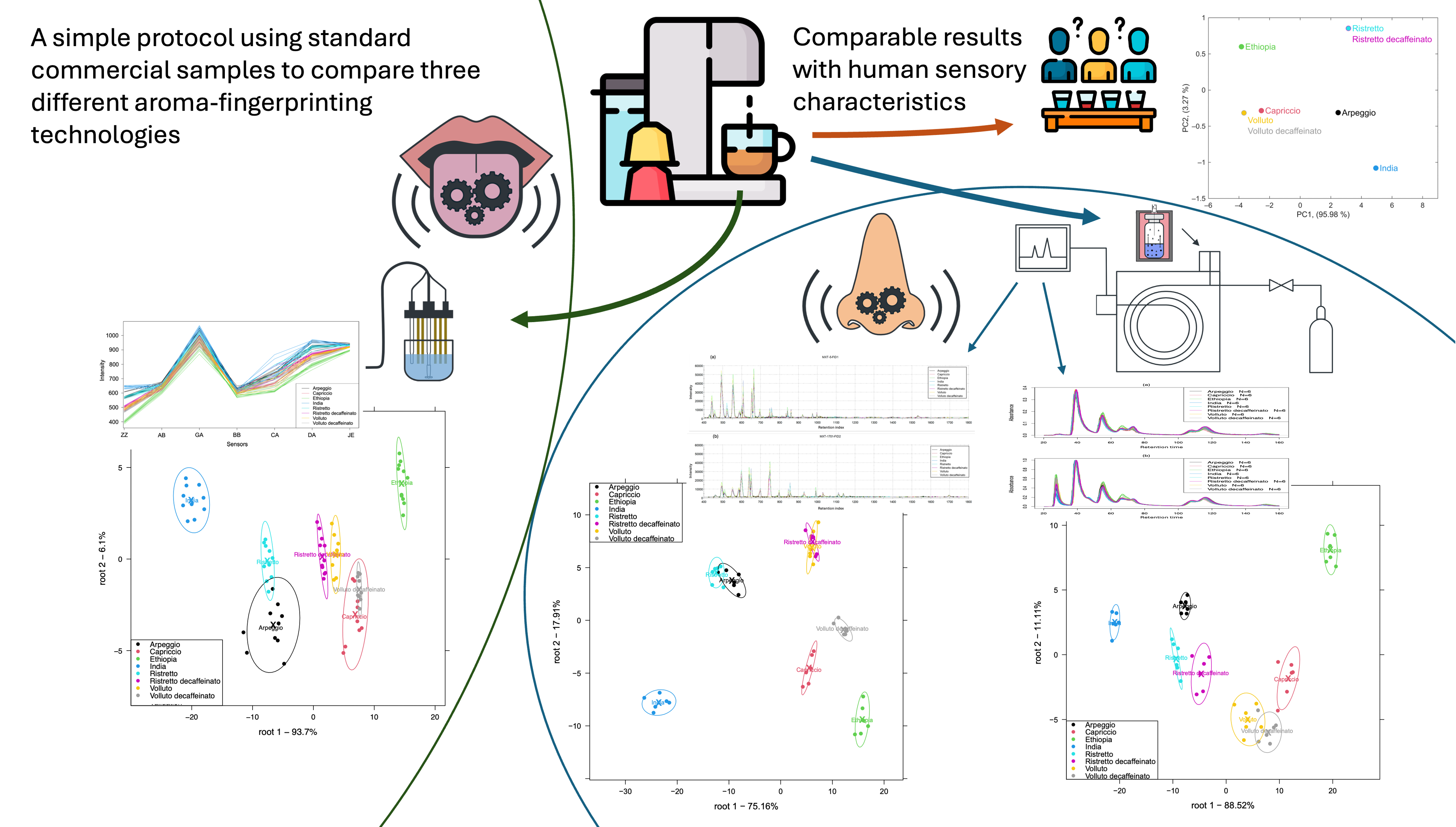It is often difficult to compare two or more devices, either during development or purchase, especially when they are operating in different parts of the world during testing. Based on the examination of coffee capsules of consistent quality, which are easily available worldwide, we have developed a methodology with which instrumental aroma testing technologies operating on different principles can be quickly compared, regardless of whether they operate in the world. Our article published in the journal Chemosensors presents the results of three significantly different devices. The surprisingly similar results show a good correlation with the results of human sensory properties. The method is suitable for comparing newly developed technologies with previous, already proven technologies; assessing their reliability, and determining which technologies provide results that are more closely related to human sensory properties; and which technologies reinforce or complement each other depending on whether they provide identical or different results when examining the same set of samples.
Coffees Brewed from Standard Capsules Help to Compare Different Aroma Fingerprinting Technologies—A Comparison of an Electronic Tongue and Electronic Noses
Biborka Gillay, Zoltan Gillay, Zoltan Kovacs, Viktoria Eles, Tamas Toth, Haruna Gado Yakubu, Iyas Aldib, George Bazar
With the development of various new types of instrumental aroma sensing technologies, there is a need for methodologies that help developers and users evaluate the performance of the different devices. This study introduces a simple method that uses standard coffee beverages, reproducible worldwide, thus allowing users to compare aroma sensing devices and technologies globally. Eight different variations of commercial coffee capsules were used to brew espresso coffees (40 mL), consisting of either Arabica coffee or a blend of Robusta and Arabica coffee, covering a wide range of sensory attributes. The AlphaMOS Astree electronic tongue (equipped with sensors based on chemically modified field-effect transistor technology) and the AlphaMOS Heracles NEO and the Volatile Scout3 electronic noses (both using separation technology based on gas chromatography) were used to describe the taste and odor profiles of the freshly brewed coffee samples and also to compare them to the various sensory characteristics declared on the original packaging, such as intensity, roasting, acidity, bitterness, and body. Linear discriminant analysis (LDA) results showed that these technologies were able to classify the samples similarly to the pattern of the coffees based on the human sensory characteristics. In general, the arrangement of the different coffee types in the LDA results—i.e., the similarities and dissimilarities in the types based on their taste or smell—was the same in the case of the Astree electronic tongue and the Heracles electronic nose, while slightly different arrangements were found for the Scout3 electronic nose. The results of the Astree electronic tongue and those of the Heracles electronic nose showed the taste and smell profiles of the decaffeinated coffees to be different from their caffeinated counterparts. The Heracles and Scout3 electronic noses provided high accuracies in classifying the samples based on their odor into the sensory classes presented on the coffee capsules’ packaging. Despite the technological differences in the investigated devices, the introduced coffee test could assess the similarities in the taste and odor profiling capacities of the aroma fingerprinting technologies. Since the coffee capsules used for the test can be purchased all over the world in the same quality, these coffees can be used as global standard samples during the comparison of different devices applying different measurement technologies. The test can be used to evaluate instrumentational and data analytical developments worldwide and to assess the potential of novel, cost-effective, accurate, and rapid solutions for quality assessments in the food and beverage industry.

Access the full paper free of charge on the website of the journal:
